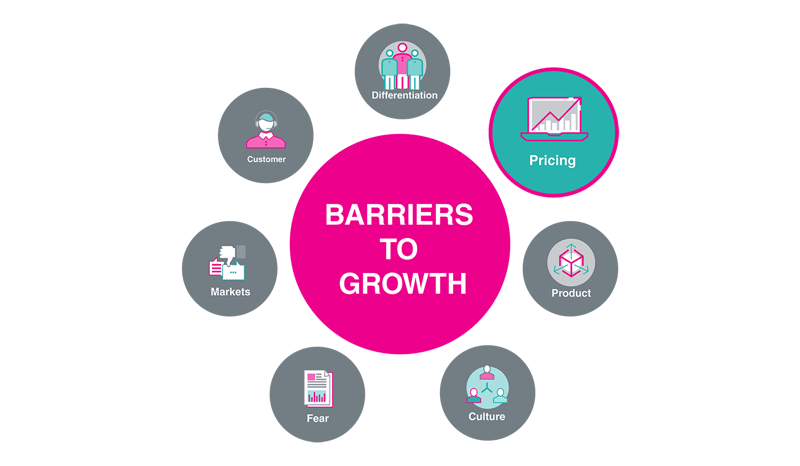Here’s a familiar scenario: A woman has had an account with a well-known clothing retailer for 30 years. Periodically, this retailer offers substantial discounts if you spend over R1000 on your account. But here’s the thing: the offer is only open to new clients. The woman knows this because she’s asked them: As a loyal, long-term account holder, couldn’t she also enjoy the discounts? The answer is always, “sorry, no, new customers only.” And it’s not only clothing retailers. Cell phone service providers, and many other businesses, frequently use the same marketing tactics.
Why is this? It may seem more glamourous to bring in new customers, but if you lose long-term, loyal ones in the process, where’s the victory? It costs between five and seven times as much to bring in a new customer as to retain an old one, yet almost half of all businesses focus the bulk of their marketing budget on customer acquisition, with only 18 percent prioritising retention. In addition, you have a 60-70% chance of selling to an existing customer, but only a 5-20% chance of converting a new one.
Here’s the thing about existing customers:
You’ve already done the heavy lifting with them. They’ve bought from you at least once, meaning marketing to them is more likely to be successful. However, if they feel ignored, marginalised or neglected, they will get itchy feet. To prevent them from defecting to your competitor, you end up having to offer a substantial discount on their next purchase. This is an expense you could easily have avoided if you’d simply spent a little more time marketing directly to them.
Important Metrics To Measure Your Marketing
Marketing to existing customers is cheaper and more successful than marketing to new ones, but that doesn’t mean you shouldn’t still measure the same metrics you would for any other campaign. The data you get from these metrics can mean the difference between success and failure, and will help you devise a solid strategy with real and tangible ways to retain those valuable existing customers.
Customer Lifetime Value
This metric measures how much revenue you can realistically anticipate from a customer over the life of their relationship with you. For example, if a customer spends an average of R1000 a month with you, and your customer lifecycle is two years, then the lifetime value of that customer is R24 000.
Savvy businesses should already have enough data in place to measure this immediately. What products does the customer in question buy from you? Do they always buy the same product, or do they purchase across your range? It’s critical to understand their buying habits in order to work out how much they spend, why they stopped buying from you, and what they might have bought had it been available. This information then forms the framework of your marketing efforts, aimed at increasing your customers’ lifetime value.
Churn Rate
You may be lucky and have loyal customers who’ve been buying from you for years. But, for the most part, customers come, stay awhile and go. We call this customer “churn,” and, obviously, you want it to be as low as possible. There are numerous ways in which you can measure churn, but, as with so many things, the simplest, most obvious way is often best. Here is a basic mathematical exercise to help you determine your churn rate:
Customers at the start of the month: 100
Existing customers who leave by the end of the month: 5
New customers who come in during the month: 50
New customers who leave in the same month as they arrive: 2
Total customers who left during the month: 7
Churn Rate: 7/100 = 7%
Sadly, there is no such thing as a 0% churn rate, but it does fluctuate according to the industry. According to strategic growth consultant, George Deeb, the optimal rate of churn is just 2.5%a month. Others feel a rate of 5% is more realistic.
These numbers may look small to you, but here’s the thing:
The difference between a churn rate of 2.5% and one of 5% is the difference between growing your business by 50% in the next five years, or not growing it at all.
Marketing hard to your existing customers is a great way to bring your churn rate down.
Customer Retention Cost
We already know it costs five times more to win a new customer than to keep an existing one. So, spend 50% of your marketing budget on keeping your current customers happy and spending!
Working out the cost of retaining a customer is easy – simply divide how much you spend on retaining them by how much they, in turn, spend with you.
Ok, So You’ve Mastered The Metrics, Now What?
You now know three extremely important things:
- How long your customers stay with you
- How much they spend during their time with you
- How many you lose in that same time period
You can use this data to see exactly how effective your current marketing strategy is. Then you can fine tune your message to strengthen your bond with your current customers. Failing to do so is inviting them to go elsewhere. You simply cannot afford to let that happen.
If you need expert, affordable marketing advice and guidance, talk to us. At The Marketing Centre, we have a large team of highly skilled, part-time proven Marketing Directors ready to share their abundance of diverse know-how with you. Give your growing business the expertise it deserves. Contact us today, or use our Marketing 360 Healthcheck to see how your marketing’s performing.



